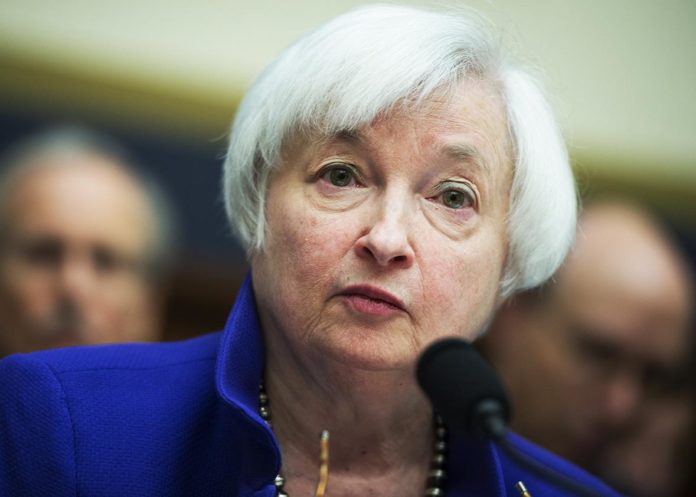Stocks popped this morning as bank shares rebounded. The Dow, S&P, and Nasdaq Composite all traded higher despite yesterday afternoon’s bearish bombshell.
No, we’re not talking about Fed Chairman Jerome Powell’s 25 basis point hike; the market was handling the rate increase quite well. It was Treasury Secretary Janet Yellen who unleashed a massive wave of selling in the final 30 minutes of trading.
Yellen released a statement saying that the Treasury would not expand its deposit insurance to cover accounts over $250,000. That shocked markets, which raced lower alongside plunging bank stocks. Gold, meanwhile, enjoyed a major gain as a result of the headline.
But today, stocks are up again and gold is, too. Megacap tech roared through noon on hopes that the Fed is truly going to hold rates level for the next few months. The Fed removed the phrase “ongoing increases” from its rate hikes statement, which should only help rate-sensitive tech names in the short term.
“The Fed has to really thread the needle carefully given the current bank sector situation, as well as other economic data, that is underscoring it’s not just a problem on Wall Street weighing on the markets,” said AXS Investments CEO Greg Bassuk.
“We’re seeing a problem on Main Street where it’s getting harder for consumers to borrow money and other downstream implications that are making it hard. As we always say, not only at the boardroom table but also at the kitchen table.”
Those are all signals of an imminent recession, but will the Fed be able to achieve a “soft landing?” The Fed seems to think so.
“Powell stuck with the Fed’s narrative that there is still a path toward a soft-landing or returning inflation to target without pushing the economy into a recession,” wrote economist Ryan Sweet of Oxford Economics.
“However, that path has become narrower because of the pressure on the banking system.”
That’s why Yellen’s comment was so particularly damaging, as it gave depositors a reason to continue with the bank runs. Yellen also ruined Powell’s “not too hawkish, not too dovish” high-wire act that left investors mostly satisfied.
Silicon Valley Bank (SVB) was unique in that it was massively exposed to long-term Treasury yield risk and held enormous unrealized losses. Other banks are sitting on big unrealized losses, too, but they’re not nearly as bad as SVB’s, nor are they so heavily tilted toward Treasurys. More than anything else, the SVB fiasco resulted from a failure by the San Francisco Fed to stress test the bank.
This is not the case with other small and regional banks. These banks face another “ticking time bomb,” though, in the form of commercial real estate loan defaults – something we covered last week. These defaults could spark an SVB-like situation for regional banks, which are responsible for issuing roughly 70% of the commercial real estate loans in America.
When that happens, Yellen’s likely to change her tune. Until then, however, the Treasury wants to act like the banking crisis is over. That has investors nervous, and rightfully so. As a result, today’s rally could be a “sell the rip” moment instead of a “buy the dip” one as the market remains uneasy about another potential bank run.








